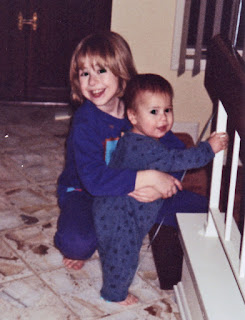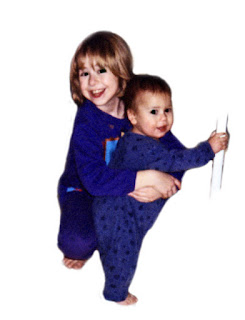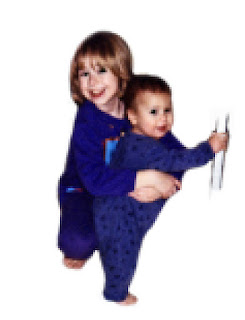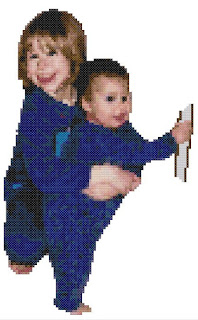I'm happy with how the skull cross stitch is coming along. I have the outline done and one eye, now working on the second eye. It's hard to estimate how much time I've put into it because I'm constantly distracted by the dog, kid, and husband, but I'd guess about 5 straight hours at least.
1stExpressions
Me and my crafting
Thursday, July 2, 2015
Sunday, June 28, 2015
Back on the old horse
After some conversations with friends at work, I realized just how much I missed crafting. I haven't really done much since my daughter was born in 2009, because, well, those babies tend to take up a lot of time.
So lately I've been scheduling more craft nights with gals from work, trips to the local paint bar, and now, finally, getting my Etsy page back up (https://www.etsy.com/shop/1stExpressions).
My first steps were to reactivate some old listings - photo manipulation, photo conversion to cross-stitch, and a sewing pattern. Now I'm working on some new listings, and my first one is inspired by tattoos. Introducing the Sugar Skull Girl pattern:
https://www.etsy.com/listing/238500244/sugar-skull-girl-cross-stitch-pattern
It's a great cross-stitch because it only uses a few colors, the lines are bold enough to handle being very small, but the style is simple enough to be done very large.
Right now I'm working on making it myself on 11 gauge cloth, so it will come out rather big (about 9"x13"). I usually don't like putting up patterns until I've practiced it, but I was just so happy when I made the pattern that I wanted to share it right away.
So, to all you still out there in blogger land, let me know what you think of this new pattern. Want to see more like it?
So lately I've been scheduling more craft nights with gals from work, trips to the local paint bar, and now, finally, getting my Etsy page back up (https://www.etsy.com/shop/1stExpressions).
My first steps were to reactivate some old listings - photo manipulation, photo conversion to cross-stitch, and a sewing pattern. Now I'm working on some new listings, and my first one is inspired by tattoos. Introducing the Sugar Skull Girl pattern:
https://www.etsy.com/listing/238500244/sugar-skull-girl-cross-stitch-pattern
It's a great cross-stitch because it only uses a few colors, the lines are bold enough to handle being very small, but the style is simple enough to be done very large.
Right now I'm working on making it myself on 11 gauge cloth, so it will come out rather big (about 9"x13"). I usually don't like putting up patterns until I've practiced it, but I was just so happy when I made the pattern that I wanted to share it right away.
So, to all you still out there in blogger land, let me know what you think of this new pattern. Want to see more like it?
Saturday, April 17, 2010
Another retouched photo
This one is from my first birthday party (so July, 1984). It was a scanned photograph, original size about 3x5 - remember those old prints with the rounded edges? I restored the color and brightened it up. Took about 45 minutes.
Sunday, November 8, 2009
Tuesday, October 13, 2009
Cross-Stitch Pattern Process
I just finished working on 2 custom picture to cross-stitch patterns for a woman on Etsy, and I thought it would be fun to share the steps involved in the conversion.
The original photo
 First off, this woman was great because she sent me high-resolution scans (300 dpi) of the old photos, which made it a lot easier to work with!
First off, this woman was great because she sent me high-resolution scans (300 dpi) of the old photos, which made it a lot easier to work with!
Cropping
 She said she wanted her and her brother, plus the railing he was holding, but she didn't care about the rest of the background. So I started by cropping the photo down to the approximate final size. I did a few touch-ups with the color at this point to improve the skin tone. I've found that when converting to cross-stitch, skin tone becomes much darker than it appears on the computer screen. So I actually over-lightened it because I know it will come out better that way.
She said she wanted her and her brother, plus the railing he was holding, but she didn't care about the rest of the background. So I started by cropping the photo down to the approximate final size. I did a few touch-ups with the color at this point to improve the skin tone. I've found that when converting to cross-stitch, skin tone becomes much darker than it appears on the computer screen. So I actually over-lightened it because I know it will come out better that way.
Touch Ups
 I mentioned that I fixed some of the color. I also removed the scratches that were present in the original, like in the girl's hair and on the boy's leg. This takes a little bit of time in Photoshop, but I definitely wouldn't want those blemishes to make it through to the final piece.
I mentioned that I fixed some of the color. I also removed the scratches that were present in the original, like in the girl's hair and on the boy's leg. This takes a little bit of time in Photoshop, but I definitely wouldn't want those blemishes to make it through to the final piece.
Remove background
 Again, the client didn't care about the background, so I cut out everything except for the two kids and a part of the railing. When the piece is stitched, she has the option of only stitching the colored parts, or stitching the entire background white (or any other color for that matter). I prefer the former method, but I like to leave that option for the client.
Again, the client didn't care about the background, so I cut out everything except for the two kids and a part of the railing. When the piece is stitched, she has the option of only stitching the colored parts, or stitching the entire background white (or any other color for that matter). I prefer the former method, but I like to leave that option for the client.
Pixelating
 Before importing the picture into the cross-stitch software, I use Photoshop to get an idea of how it will look. I pixelate the image so that each inch is 14 pixels per side, which is the same as 14-count Aida cloth (as the client specified). The image is blurry, but overall looks good.
Before importing the picture into the cross-stitch software, I use Photoshop to get an idea of how it will look. I pixelate the image so that each inch is 14 pixels per side, which is the same as 14-count Aida cloth (as the client specified). The image is blurry, but overall looks good.
Convert to stitches
 I import the picture into the cross-stitch software, which then re-does the pixelating that I did in the last step. Only the software takes it a step further: it matches the color value of each pixel to known embroidery thread colors. This is the crucial step that would take forever by hand. However, the downside of the software is it has a hard time with detail, so the faces can get blurry and odd-looking. Another downside is that small variation in color can become extreme when pixelated, so a person can end up with a spot of green on their cheek or purple in their hair. These have to be cleaned up by hand and that's the most time-consuming part of the project. I also check through the image to make sure that each floss color is being used wisely. For example, it is inefficient to have one stitch of dark blue in a sea of medium blue because then you have to make just that one stitch differently, but the visual result won't be any different if you did it all in medium blue (of course, detailed areas like faces are the exception - one spot of dark blue can be an eye and you don't want to lose one of them). Also I don't like to make the client work with colors that have fewer than 10 stitches in the pattern, so I manually replace them with appropriate colors that are used elsewhere in the image.
I import the picture into the cross-stitch software, which then re-does the pixelating that I did in the last step. Only the software takes it a step further: it matches the color value of each pixel to known embroidery thread colors. This is the crucial step that would take forever by hand. However, the downside of the software is it has a hard time with detail, so the faces can get blurry and odd-looking. Another downside is that small variation in color can become extreme when pixelated, so a person can end up with a spot of green on their cheek or purple in their hair. These have to be cleaned up by hand and that's the most time-consuming part of the project. I also check through the image to make sure that each floss color is being used wisely. For example, it is inefficient to have one stitch of dark blue in a sea of medium blue because then you have to make just that one stitch differently, but the visual result won't be any different if you did it all in medium blue (of course, detailed areas like faces are the exception - one spot of dark blue can be an eye and you don't want to lose one of them). Also I don't like to make the client work with colors that have fewer than 10 stitches in the pattern, so I manually replace them with appropriate colors that are used elsewhere in the image.
Pattern

Finally, when I get the pattern to where I like it, I use the software to convert the pixels to symbols and match the symbols to the thread colors. I always double-check here because the software likes to use symbols that are very similar, like squares that differ by less than 10% in size. Once printed, it is almost impossible to tell the difference in these, so again I have to manually identify and adjust those. After that, it's just a matter of printing it out and sending it to the client!
The original photo
 First off, this woman was great because she sent me high-resolution scans (300 dpi) of the old photos, which made it a lot easier to work with!
First off, this woman was great because she sent me high-resolution scans (300 dpi) of the old photos, which made it a lot easier to work with!Cropping
 She said she wanted her and her brother, plus the railing he was holding, but she didn't care about the rest of the background. So I started by cropping the photo down to the approximate final size. I did a few touch-ups with the color at this point to improve the skin tone. I've found that when converting to cross-stitch, skin tone becomes much darker than it appears on the computer screen. So I actually over-lightened it because I know it will come out better that way.
She said she wanted her and her brother, plus the railing he was holding, but she didn't care about the rest of the background. So I started by cropping the photo down to the approximate final size. I did a few touch-ups with the color at this point to improve the skin tone. I've found that when converting to cross-stitch, skin tone becomes much darker than it appears on the computer screen. So I actually over-lightened it because I know it will come out better that way.Touch Ups
 I mentioned that I fixed some of the color. I also removed the scratches that were present in the original, like in the girl's hair and on the boy's leg. This takes a little bit of time in Photoshop, but I definitely wouldn't want those blemishes to make it through to the final piece.
I mentioned that I fixed some of the color. I also removed the scratches that were present in the original, like in the girl's hair and on the boy's leg. This takes a little bit of time in Photoshop, but I definitely wouldn't want those blemishes to make it through to the final piece.Remove background
 Again, the client didn't care about the background, so I cut out everything except for the two kids and a part of the railing. When the piece is stitched, she has the option of only stitching the colored parts, or stitching the entire background white (or any other color for that matter). I prefer the former method, but I like to leave that option for the client.
Again, the client didn't care about the background, so I cut out everything except for the two kids and a part of the railing. When the piece is stitched, she has the option of only stitching the colored parts, or stitching the entire background white (or any other color for that matter). I prefer the former method, but I like to leave that option for the client.Pixelating
Convert to stitches
 I import the picture into the cross-stitch software, which then re-does the pixelating that I did in the last step. Only the software takes it a step further: it matches the color value of each pixel to known embroidery thread colors. This is the crucial step that would take forever by hand. However, the downside of the software is it has a hard time with detail, so the faces can get blurry and odd-looking. Another downside is that small variation in color can become extreme when pixelated, so a person can end up with a spot of green on their cheek or purple in their hair. These have to be cleaned up by hand and that's the most time-consuming part of the project. I also check through the image to make sure that each floss color is being used wisely. For example, it is inefficient to have one stitch of dark blue in a sea of medium blue because then you have to make just that one stitch differently, but the visual result won't be any different if you did it all in medium blue (of course, detailed areas like faces are the exception - one spot of dark blue can be an eye and you don't want to lose one of them). Also I don't like to make the client work with colors that have fewer than 10 stitches in the pattern, so I manually replace them with appropriate colors that are used elsewhere in the image.
I import the picture into the cross-stitch software, which then re-does the pixelating that I did in the last step. Only the software takes it a step further: it matches the color value of each pixel to known embroidery thread colors. This is the crucial step that would take forever by hand. However, the downside of the software is it has a hard time with detail, so the faces can get blurry and odd-looking. Another downside is that small variation in color can become extreme when pixelated, so a person can end up with a spot of green on their cheek or purple in their hair. These have to be cleaned up by hand and that's the most time-consuming part of the project. I also check through the image to make sure that each floss color is being used wisely. For example, it is inefficient to have one stitch of dark blue in a sea of medium blue because then you have to make just that one stitch differently, but the visual result won't be any different if you did it all in medium blue (of course, detailed areas like faces are the exception - one spot of dark blue can be an eye and you don't want to lose one of them). Also I don't like to make the client work with colors that have fewer than 10 stitches in the pattern, so I manually replace them with appropriate colors that are used elsewhere in the image.Pattern

Finally, when I get the pattern to where I like it, I use the software to convert the pixels to symbols and match the symbols to the thread colors. I always double-check here because the software likes to use symbols that are very similar, like squares that differ by less than 10% in size. Once printed, it is almost impossible to tell the difference in these, so again I have to manually identify and adjust those. After that, it's just a matter of printing it out and sending it to the client!
Subscribe to:
Comments (Atom)





